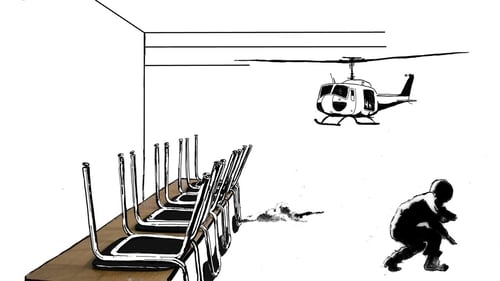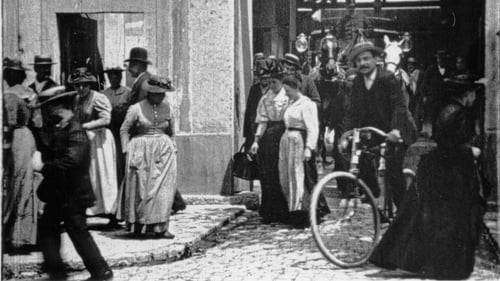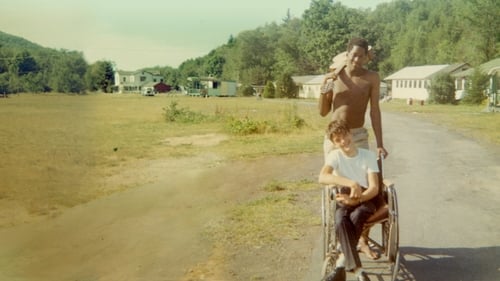Regard Silence (2023)
Genre : Documentary
Runtime : 30M
Director : Santiago Zermeño
Synopsis
“I love poetry because it makes me feel like my mind expands.” In Regard Silence, that's the very first sentence expressed—in sign language of course. Watching the poems signed by deaf people in this film has a similarly mind-expanding effect. That’s because sign language—the Mexican version in this case—is a very different means of communication than written or spoken language.

Walla Walla Wiffle is an annual one day round-robin wiffleball tournament wherein 48 men from all over the country gather in Eastern Washington to play wiffleball. Most of the participants are in their 30s or 40s, married with children, highly educated and well-employed. The film documents the joy they take in being able to revert to the simplicity of their youth, if only for a day, while also showing the conflicts that arise from the inescapable responsibilities that come with jobs, relationships and families.

Through an intimate conversation, Steph Jane, age 28, shares the struggles and lessons her second diagnosis of stage-4 cancer has taught her. From being genuinely present and savouring simple moments to thoughts of the future and what really matters, Steph reveals beauty and wisdom which transcend appearance and years.

A woman in Pakistan sentenced to death for falling in love becomes a rare survivor of the country's harsh judicial system.

When Bill Babbitt realizes his brother Manny has committed a crime he agonizes over his decision to call the police.

Footage from and interviews with attendees of a public function in Griffith Park, Los Angeles sponsored by the Gay Liberation Front.

Profile of the actress Zita Johann

Working men and women leave through the main gate of the Lumière factory in Lyon, France. Filmed on 22 March 1895, it is often referred to as the first real motion picture ever made, although Louis Le Prince's 1888 Roundhay Garden Scene pre-dated it by seven years. Three separate versions of this film exist, which differ from one another in numerous ways. The first version features a carriage drawn by one horse, while in the second version the carriage is drawn by two horses, and there is no carriage at all in the third version. The clothing style is also different between the three versions, demonstrating the different seasons in which each was filmed. This film was made in the 35 mm format with an aspect ratio of 1.33:1, and at a speed of 16 frames per second. At that rate, the 17 meters of film length provided a duration of 46 seconds, holding a total of 800 frames.

A highly secure conference centre, nestled in the mountains. Hugo Radi combines a creative way of filming this locus of power with two fictional voice-over accounts to construct a dystopian world with real contours. This speculative film seems to draw inspiration from the most frightening elements of our contemporary societies.

A documentary showcasing a family as they pack up their home of twelve years and begin looking towards the future.

Journalist Dermi Azevedo has never stopped fighting for human rights and now, three decades after the end of the military dictatorship in Brazil, he's witnessing the return of those same practices.

A 16 mm film, featuring Yoko Ono's own eye slowly blinking, shot by Peter Moore with a high-speed camera at 2,000 frames per second, which is projected at normal speed, 24 frames per second, thus creating a slow-motion effect.

Tessa Hughes-Freeland’s “Baby Doll” is a tiny slice of cinéma vérité from 1982 about the girls working the now defunct Baby Doll Lounge on Church and White St. in downtown Manhattan. It captures a moment before NYC got sanitized.

I went to China with hand luggage only. In China, motorcyclists wear the reverse jacket and restaurants serve fish heads, crayfish and eels. The event's employee studies cinema and likes Kung Fu films. I bought vacuum-packed chicken feet.

A world all on its own of humour, warmth and love: Between a boy and his bedridden grandfather there is deep friendship. The aging man has a secret he wants to share with his grandson; together they make for the woods on a final adventure.

A Four-Mations documentary covering the importance of audial sound in the medium of animation.

A young woman of the Tarahumara, well-known for their extraordinary long distance running abilities, wins ultramarathons seemingly out of nowhere despite running in sandals.

Down the road from Woodstock in the early 1970s, a revolution blossomed in a ramshackle summer camp for disabled teenagers, transforming their young lives and igniting a landmark movement.

In a bid to encourage city-dwellers to leave behind the restrictions of war, 'The Green Girdle' escapes from the austere urban landscape of inner-city London and savours the natural delights of the capital’s rural surroundings.

The filmmaker is asked to direct a short film for the opening of a certain festival. The responsibility upsets and distresses her. She finds a solution that results in a manifest secret about fragile cinema and it’s adventures.

In rocky Newfoundland, renowned French artist Jean Claude Roy gathers his paints and sets off to face the day. Whether it be freezing snow, violent wind, or pouring rain, he commits vibrant colors to canvas and conquers the day by weaving crooked beauty out of difficulties.












